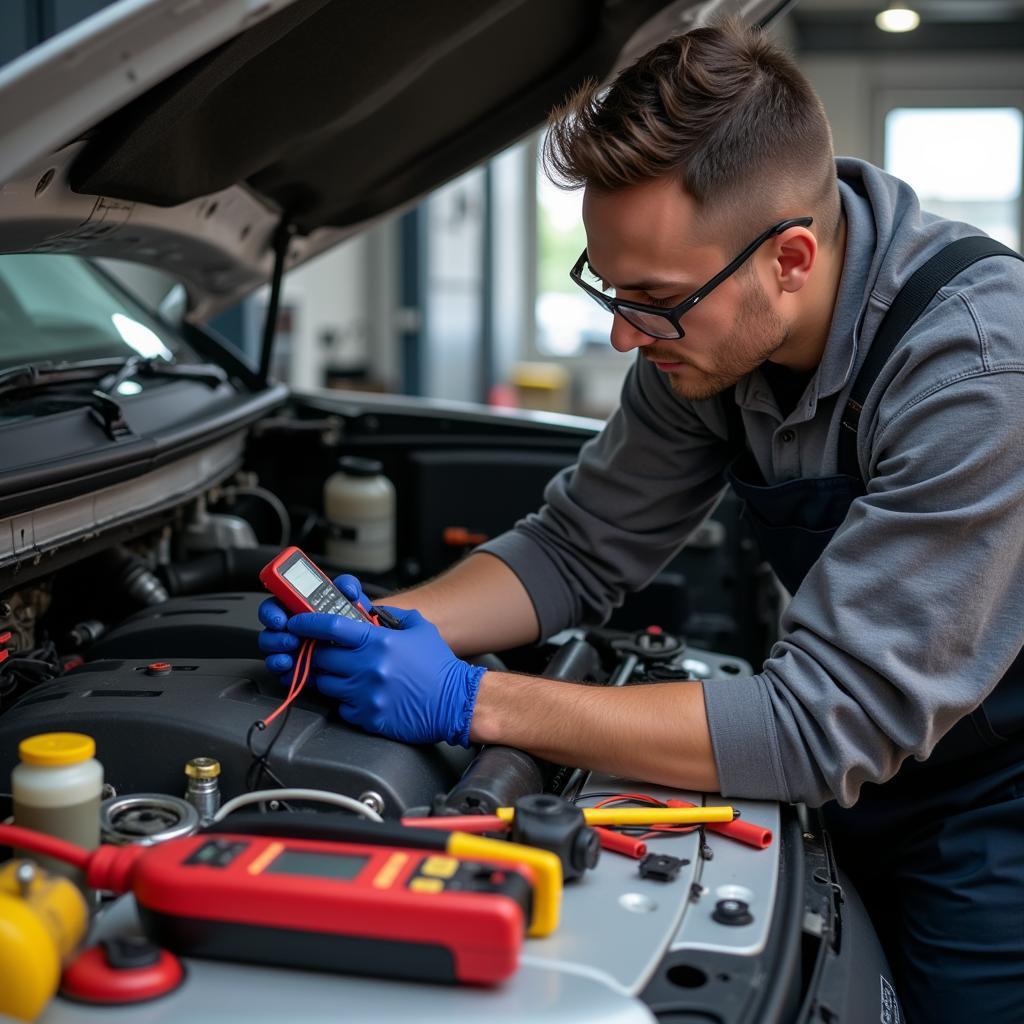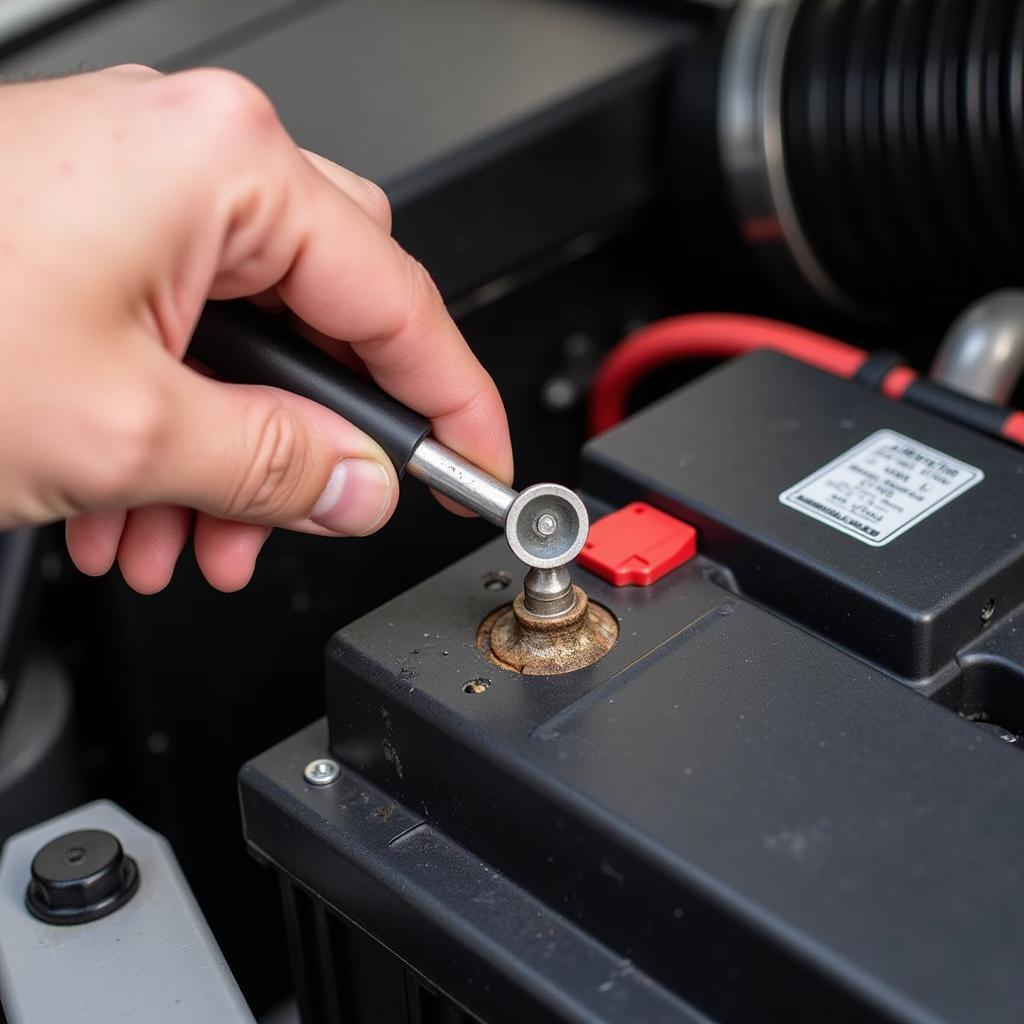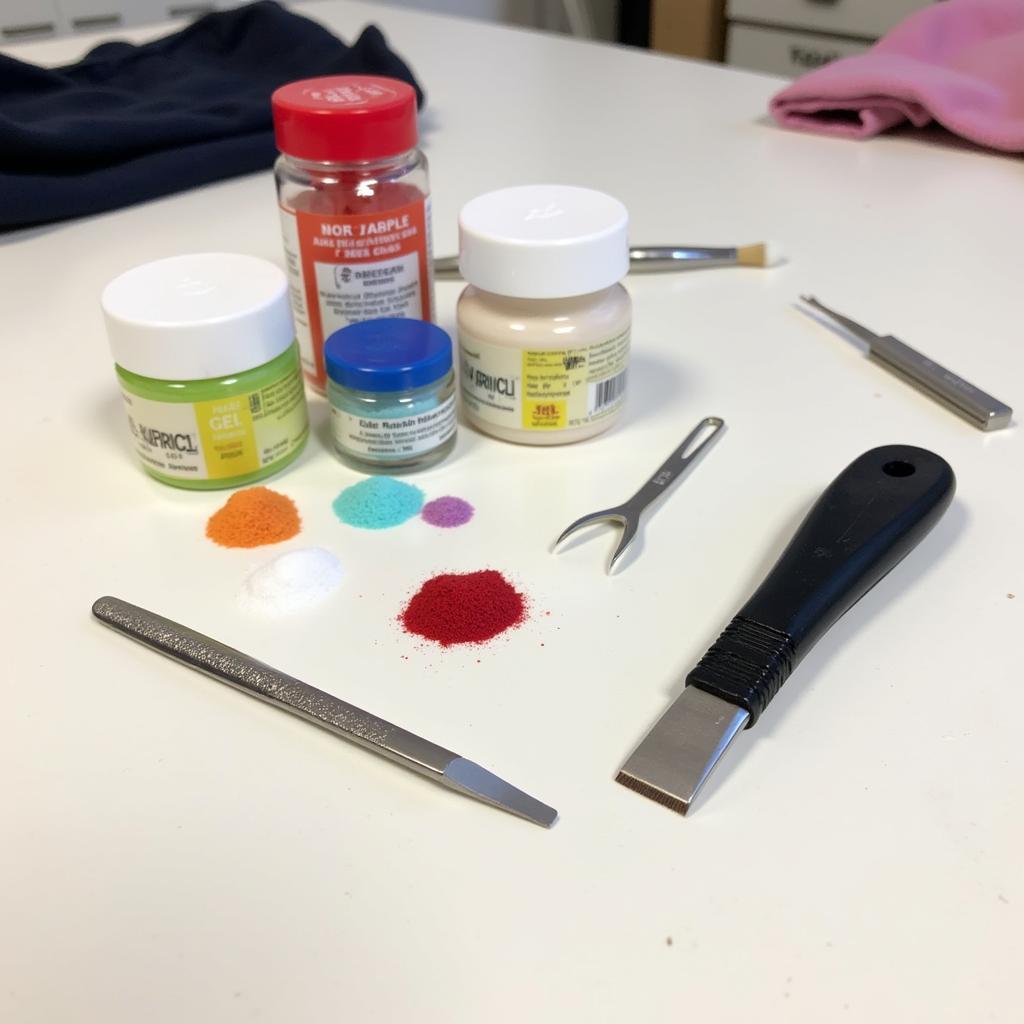Spider web cracks in your car’s paint, also known as stress cracks, can be a real eyesore. These fine cracks resemble a spider’s web and can detract from your car’s appearance. Fortunately, fixing them is often manageable, especially if caught early. This guide will explore the causes, prevention, and step-by-step repair process for spider web cracks in car paint.
Understanding Spider Web Cracks
Spider web cracks are usually shallow, appearing in the clear coat or the top layer of paint. They’re often caused by impacts, like small stones or debris hitting the car’s surface. Temperature fluctuations can also contribute, causing the paint to expand and contract, eventually leading to these hairline fractures. Ignoring them can worsen the problem, allowing moisture to penetrate and damage the underlying paint layers.
Another common cause is improper paint application. If the paint is applied too thickly or unevenly, it can become more susceptible to cracking. Similarly, using low-quality paint or clear coat can increase the risk of spider web cracks.
Can You Fix Spider Web Cracks Yourself?
Yes, minor spider web cracks can often be fixed at home with the right tools and a bit of patience. how to fix spider cracks in car paint provides a comprehensive guide to DIY solutions. However, if the cracks are deep or widespread, it’s best to consult a professional.
DIY Repair Guide: How to Fix Spider Web Cracks in Car Paint
Here’s a step-by-step guide for repairing minor spider web cracks:
- Clean the Area: Thoroughly wash and dry the affected area to remove any dirt or debris.
- Sand the Cracks: Using 2000-grit sandpaper, gently sand the area to smooth the cracks. Don’t apply too much pressure, as you only want to level the clear coat.
- Compound and Polish: Apply a rubbing compound to the sanded area and buff it using a microfiber cloth. Follow this with a polishing compound to restore shine.
- Apply Touch-Up Paint (If Necessary): If the cracks have penetrated the color coat, apply touch-up paint carefully, allowing it to dry completely.
- Apply Clear Coat: Apply a thin, even coat of clear coat over the repaired area. Allow it to dry and cure according to the manufacturer’s instructions.
- Final Polish: After the clear coat has cured, give the area a final polish to blend it seamlessly with the surrounding paint.
“A common mistake is sanding too aggressively,” says automotive expert, Michael Johnson. “This can remove too much clear coat and create a bigger problem. Always start with fine-grit sandpaper and work your way up if necessary.”
Preventing Spider Web Cracks
Prevention is always better than cure. Here are some tips to avoid spider web cracks in the first place:
- Regular Washing and Waxing: Keep your car clean and protected with regular washes and waxing. This helps protect the paint from environmental damage.
- Parking in Shade: Whenever possible, park your car in the shade to minimize temperature fluctuations.
- Careful Washing Techniques: Avoid using abrasive materials or high-pressure washers that can damage the paint.
- Quality Paint and Clear Coat: If you’re repainting your car, invest in high-quality paint and clear coat.
“Protecting your car’s paint is an investment,” adds automotive specialist, Sarah Lee. “Regular maintenance can prevent costly repairs down the line.” Looking for more tips on maintaining your car’s exterior? Check out our guide on fixing clear coat on a car. You might also find this article on how to fix crack paint on car helpful.
Conclusion
Spider web cracks in car paint can be unsightly, but addressing them promptly can prevent further damage. Whether you choose a DIY approach or consult a professional, understanding the causes and prevention methods will help keep your car looking its best. For other related issues, you might find information on fix car trunk seal or can you fix sun damaged car paint helpful. Remember, for professional advice and assistance, you can reach AutoTipPro at +1 (641) 206-8880 or visit our office at 500 N St Mary’s St, San Antonio, TX 78205, United States.







Leave a Reply